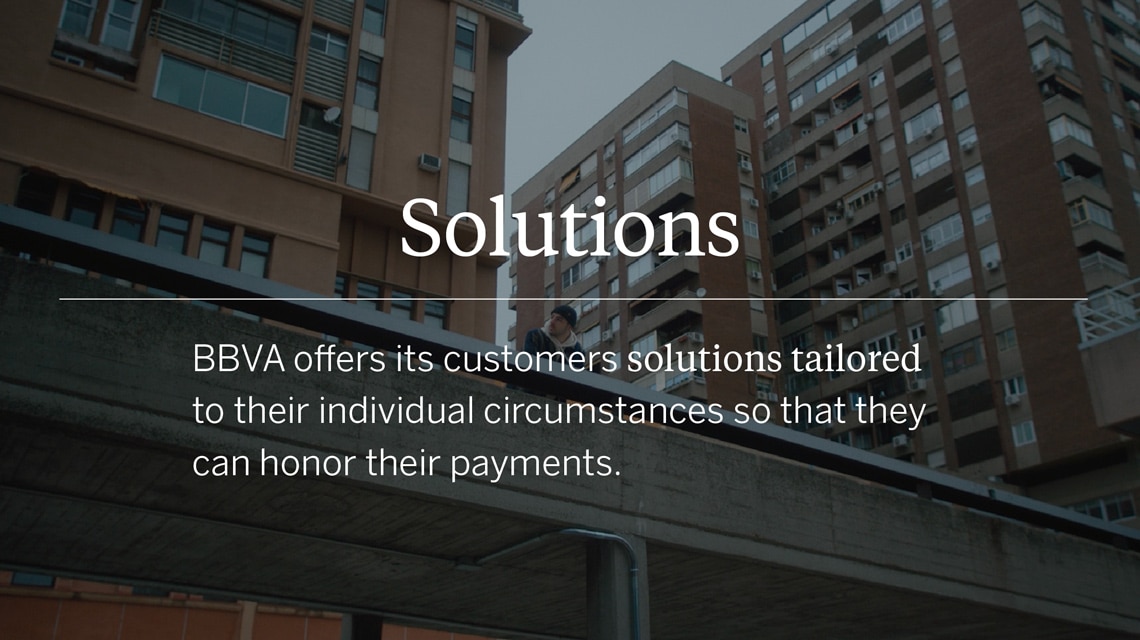Banking solutions for vulnerable and elderly customers and those living in remote rural communities in Spain
The surge in online banking has heralded many benefits for customers who insist on being able to bank wherever and whenever they choose. However, the digital revolution has been harder for many older customers, who are not very Internet savvy, and for those living in villages and rural parts of Spain. Moreover, customers finding it hard to keep up with their payment obligations need solutions, such as tailoring installments to their payment capacity or having their loan refinanced. Banks have reacted to these social demands and are stepping up to the challenge.

Relentless technological progress has made it even more necessary for financial institutions to keep a close eye on the future.
BBVA accompanies its clients to offer them the very best experience across all channels and confidently transmit to them that every change happens to be an opportunity. With this in mind, the bank strives to leave no one behind, focusing on financial inclusion and being sensitive to the needs of each segment.
The bank’s firm commitment to offering an outstanding and fully personalized service has led it to invest in physical, remote and digital channels, as it focuses on the specific needs of each customer, no matter their age or where they live in Spain.
The National Statistics Institute has found that three out of ten people over the age of 65 do not use the Internet on a regular basis, which is significant given that this age group accounts for more than 20 percent of the population in Spain. For elderly customers who are not very familiar with digital channels, banks such as BBVA have stepped up the support they provide in various ways.
First, BBVA has hired more than 300 specially trained managers adept at dealing with senior customers and who attend to their needs on a more personal basis. It also offers extended cashiering hours and priority personal attention over the telephone and in branch. More than 100,000 customers over the age of 65 use the bank’s telephone channel every month.
Yet the measures don’t stop there. BBVA is aware that this senior segment tends to be less digital and has responded by adapting its more than 4,700 ATMs across all of Spain to make them easier to read and use among the elderly. Notably the ATMs now feature a simpler language and design. It has also been busy developing its mobile app, which now has larger font size and is easier to use so that elderly customers can carry out basic transactions via the app.
The bank also happens to offer free training in digital skills and fraud prevention in Spain. More than two million customers aged over 65 stand to benefit from all these measures put in place by the bank. This positive action has led to an improvement of 8 pp over the last two years in their satisfaction with the service and support offered by BBVA.
Indeed, according to a survey conducted by Inmark in April 2024, there has been a steady improvement in the perception that people aged over 65 have of the support and service they receive from banks. For instance, 79.9 percent of customers aged over 65 claim to be happy with the range of services and level of support they receive at bank branches.
This same survey finds that 92.3 percent of people in this segment are either satisfied or very satisfied with mobile banking, with a figure of 89.3 percent for Internet banking and 83.8 percent for the personal manager.
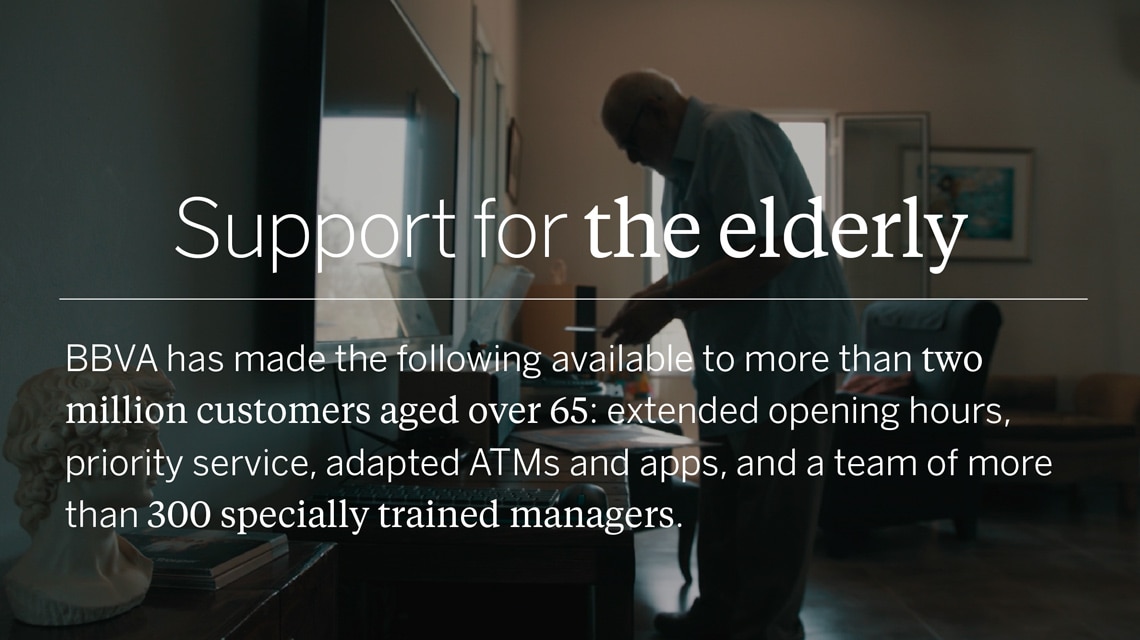
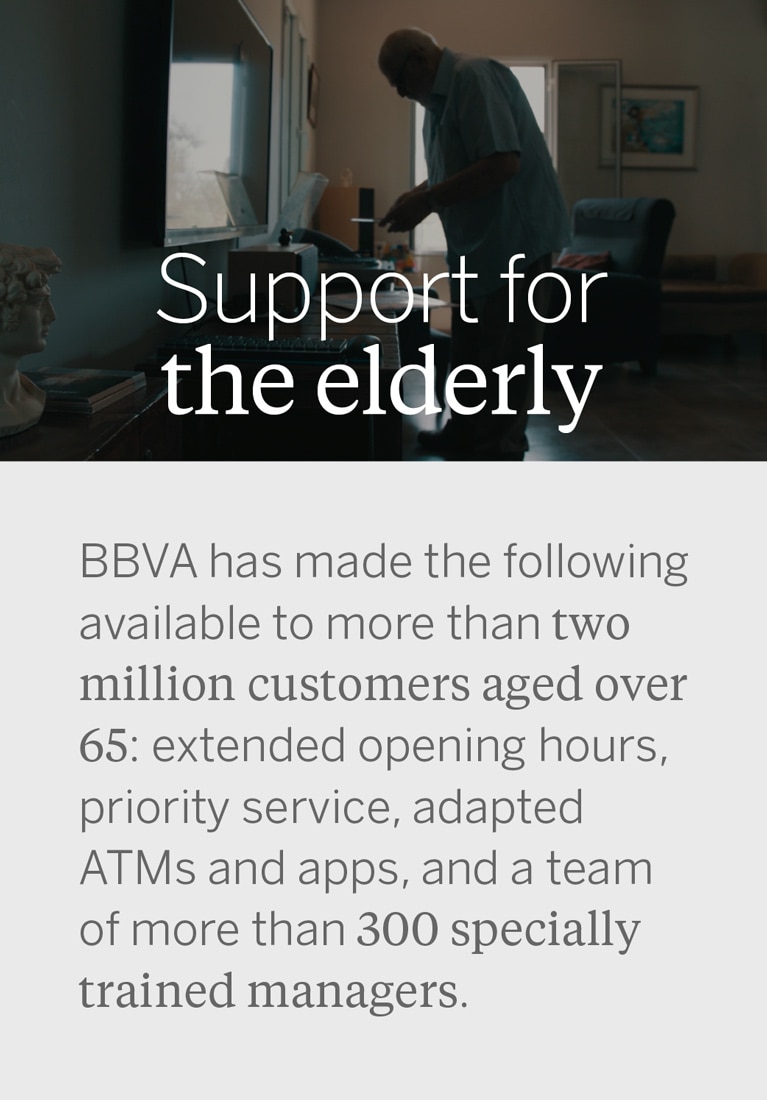
Since 2022, when the three banking associations (AEB, CECA and Unacc) proposed a roadmap to improve levels of financial inclusion in rural Spain, more than 225,000 citizens living in 555 small municipalities now have a physical banking point near them, according to the ‘Report on Financial Inclusion in Spain – 2023.’
Since then, solutions have been offered to ensure access to financial services in more rural parts of Spain. The roadmap proposes a variety of measures, depending on the population of each municipality.
More precisely, BBVA has a network of 300 branches, 72 percent of which are located in towns with fewer than 5,000 inhabitants. It has also signed an agreement with the Correos postal service to extend financial services in these remote communities. As a result, the bank's customers can now withdraw cash at the 4,800 Correos post offices located across all of Spain, half of which are located in rural communities.
Correos Cash is already available on the BBVA app, which generates a QR code that can then be used to withdraw cash at any Correos office. Alternatively, customers can arrange for their cash to be delivered to their own home through the 30,000-plus letter carriers who work for Correos throughout Spain, 6,000 of whom serve rural areas.
With this positive action, BBVA is doing its bit to help all citizens—regardless of where they live—have easy access to their money with as little travel as possible.
This positive action among banks has led to a drop in the percentage of the excluded population from 3.3 percent (meaning the percentage of the population living in communities where there are no bank branches at all) to 0.93 percent, according to the 2023 Report on Financial Inclusion in Spain.
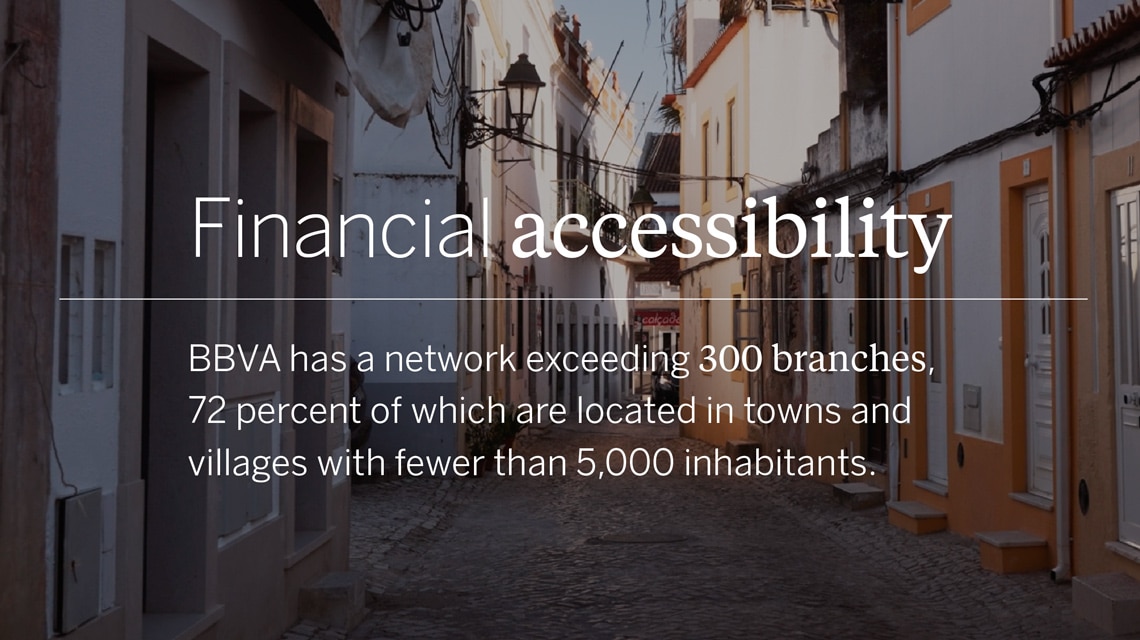
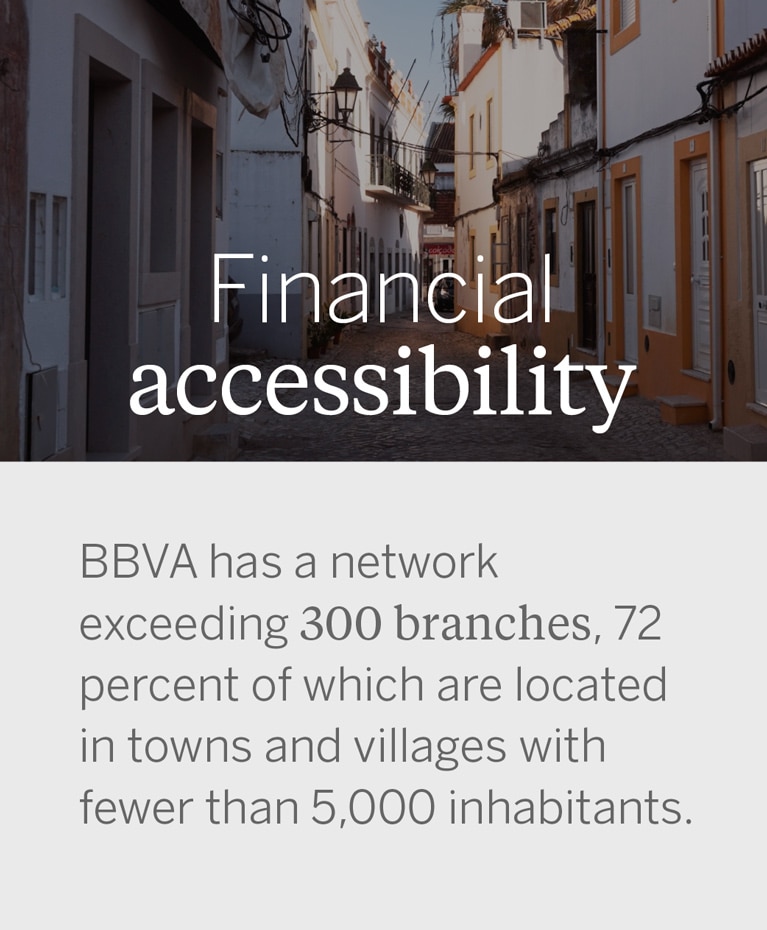
Banks are always offering solutions to customers who find it hard to honor their payments. When a customer asks for help or is late in repaying their loan, the bank looks for viable solutions, such as trying to adjust the installments to the customer’s payment capacity or perhaps refinancing the loan.
In the specific case of mortgages, customers in difficulty can request relief under the Code of Best Practices (CBP), provided they meet a number of requirements. This code provides for a reduction in the interest rate, the application of an interest-only period and the extension of the loan term. If the debt restructuring is unsuccessful, the code provides for the possibility of requesting a debt write-off. If this also fails to resolve the customer’s unfortunate situation, they are offered the option of handing over ownership of their primary residence to the bank (satisfaction of debt in lieu of payment), in exchange for the cancellation of the outstanding debt, though they are also granted the right to continue living this time on a rental basis.
BBVA goes one step further by reaching out to 100 percent of its customers. Even if they do not meet the requirements for relief under the Code of Good Practices, the bank offers them solutions tailored to their individual circumstances so that they can honor their payments.
